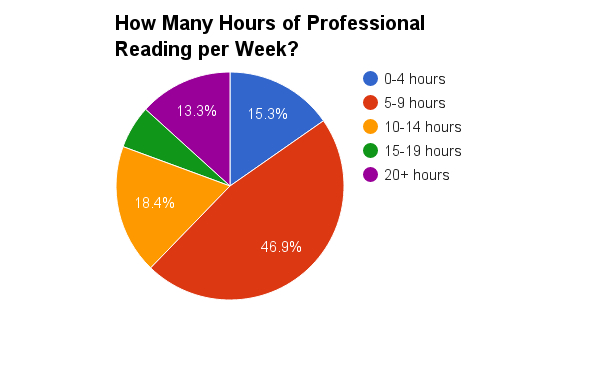Learning science in a classroom is an anomaly. Once school is over, it is very unusual for professionals or citizens to learn more science in classes. Instead we gain most new knowledge from books, articles and TV.
For professional scientists conferences and conversations are important and lectures may be effective, but reading is the key.
Reading is the cheapest, most accessible and sustainable learning method for citizens or a career in the sciences.

Yet reading is a forgotten pedagogy in most classrooms.
I have written before about effective reading strategies in science. This blog is about assessing learning through reading.
Assessing reading in science classes can be approached from two traditions: reading comprehension assessment, like you’d expect to see in primary schools, and end of unit style questions you’d expect at secondary. Both are important.
Comprehension
Reading comprehension questions assess whether the student has understood the words and the meaning of the text. You assess comprehension during and immediately following reading.
Reading aloud (always useful) lets you hear immediately the quality of reading and allows intervention during the reading. In Teach Like a Champion and Reading Reconsidered, Doug Lemov and colleagues recommend reading aloud as a key reading strategy in class. They also recommend reading aloud in pairs, multiplying the ratio of active reading that takes place during this activity. The teacher moves around the room listening and intervening where necessary.
To increase the active thinking ratio further, I add an extra job for the listening partner. After each short section of text, I ask the listener to respond with either:
- “I wonder ….” The listening partner has to ask a question about the text just read, for example “I wonder why all insects have the same number of legs.” There is no obligation for anyone to answer these questions, but they can be used to assess understanding.
- “In other words…” The listening partner has to paraphrase the key idea from the paragraph.
- “Could you read that again please?” Sometimes you have to read a text twice (or more) to understand it. This is normal!
After each paragraph, the partners swap roles.
Comprehension questions at the end of the text can tell you the extent of each individual’s understanding of the text. You can set simple factual retrieval questions (e.g. How many legs does the text tell you the ladybird has?) You don’t need too many of these.
The question: “Why do we need to learn stuff when we’ve got Google?” has some merit when you just want fact retrieval, however, for real understanding, the learner has to understand the meaning.
You can assess a reader’s understanding of the meaning in a wide range of ways. Here are a few:
- Can the reader solve a new problem using the information given? (E.g. Use the information about seaweed photosynthesis to design an underwater greenhouse).
- Can the reader explain in their own words (paraphrase).
- Can the reader draw conclusions and make inferences using the text? (E.g. What source of energy would be most appropriate for the Antarctic research base?)
- Can the reader use her existing knowledge to analyse or evaluate the information in the text? (E.g. The diagram shows the Mars rover uses a nuclear power source. Use the information in the text and your own knowledge to write a list of advantages and disadvantages to using this power source for space exploration).
But even excellent comprehension of a text is not the same as learning. Useful reading needs to impact on long-term memory. It needs to integrate with other learning, past and future. (This is true of all learning stimuli). The learning needs to be assessed as well as the comprehension.
Assessing Learning
The typical end-point assessment is an test. Test questions assess how well a student has learnt a fact, skill or concept. Classroom tests are not designed to assess the learning method.
Unless you have developed a 100% reading based pedagogy (I am NOT recommending this!) the test will not differentiate between the reading a learner did and the rest of the classroom activities. That’s true of any classroom activity.
Example: the life cycle of an insect
I might use the following stimuli for thinking about insect life-cycles:
- pond dipping
- reading a text (KS2 example here)
- teacher explanation including ‘question and answer.’
Any summative assessment of this learning would assess the whole package. That is fine. You may get a sense of what was learnt from each activity by odd pieces of information given, but learning is not a single moment thing – all of the activities add a layer of learning that can’t really be separated later.
It is difficult to assess the effectiveness of reading as a learning method.
Conclusion
Reading is a key learning skill after schooling, but in science lessons (in the UK) it is rarely used.
Reading comprehension can be easily and productively assessed in class, but assessing learning through reading is much more difficult. In my experience, introducing reading into science lessons has led to improved test results. Until I can get better evidence, that will do.
